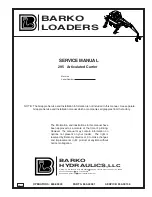
Chapter 1
Introduction
©
National Instruments Corporation
1-5
Acknowledgment Bit (ACK)
All receivers use the Acknowledgment Bit to acknowledge successful
reception of the frame. The ACK bit is transmitted recessive (1), and is
overwritten as dominant (0) by all devices that receive the frame
successfully. The receivers acknowledge correct frames regardless of the
acceptance test performed on the arbitration ID. If the transmitter of the
frame detects no acknowledgment, it could mean that the receivers detected
an error (such as a CRC error), the ACK bit was corrupted, or there are no
receivers (for example, only one device on the network). In such cases, the
transmitter automatically retransmits the frame.
End of Frame
Each frame ends with a sequence of recessive bits. After the required
number of recessive bits, the CAN bus is idle, and the next frame
transmission can begin.
CAN Error Detection and Confinement
One of the most important and useful features of CAN is its high reliability,
even in extremely noisy environments. CAN provides a variety of
mechanisms to detect errors in frames. This error detection is used to
retransmit the frame until it is received successfully. CAN also provides an
error confinement mechanism used to remove a malfunctioning device
from the CAN network when a high percentage of its frames result in
errors. This error confinement prevents malfunctioning devices from
disturbing the overall network traffic.
Error Detection
Whenever any CAN device detects an error in a frame, that device
transmits a special sequence of bits called an error flag. This error flag is
normally detected by the device transmitting the invalid frame, which then
retransmits to correct the error. The retransmission starts over from the start
of frame, and thus arbitration with other devices is again possible.
CAN devices detect the following errors, which are described in the
following sections:
•
Bit error
•
Stuff error
•
CRC error
















































